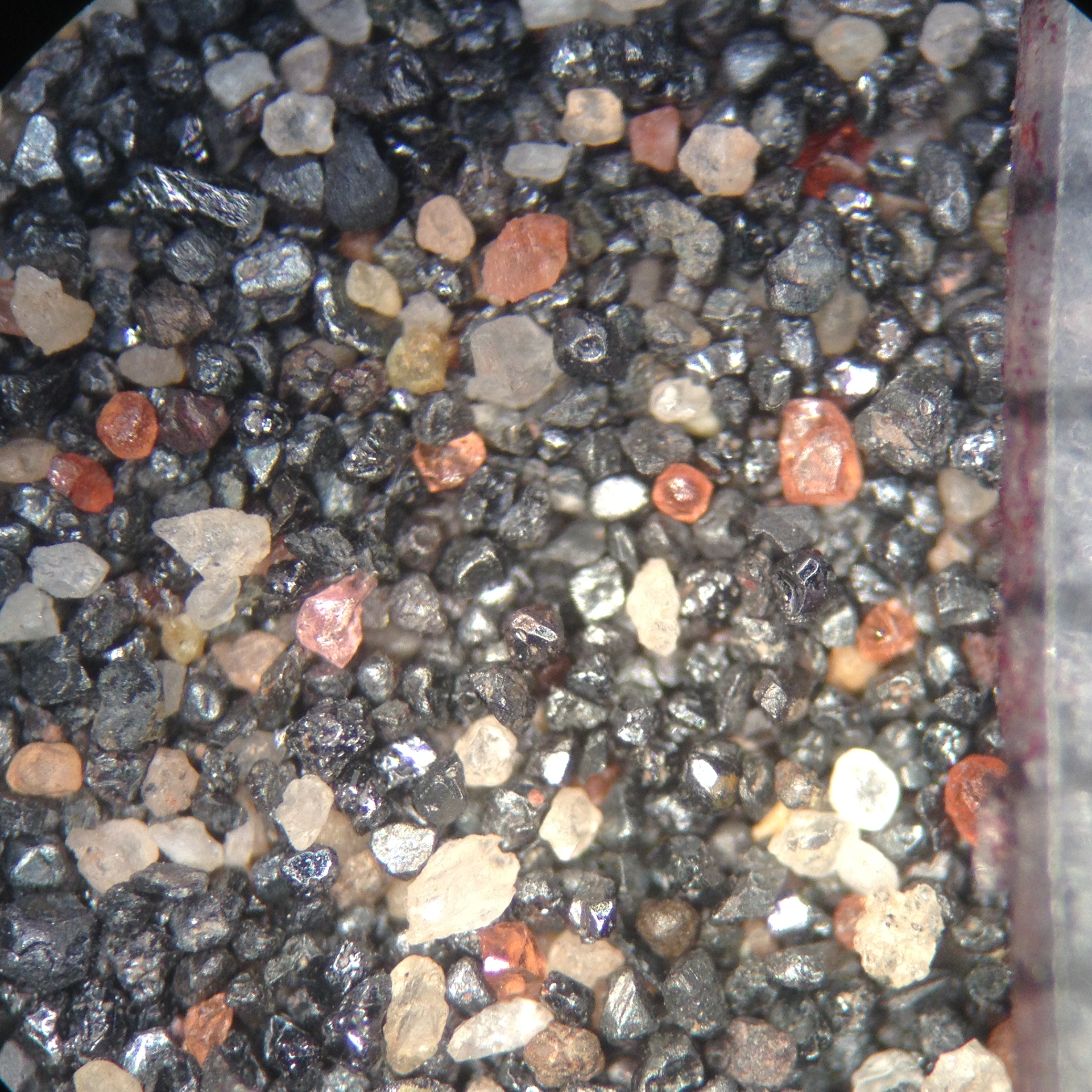Black Sand, Arroyo in Santa Fe, New Mexico, Under the
Microscope
This is a black sand deposit in the bed of an arroyo in
Santa Fe, New Mexico. The dominant mineral is magnetite. The
orange grains are garnets. The green grains are primarily hornblende. The scale on
the extreme right is marked in millimeters.
Macro Photograph
Definition/Function:
Black sand deposits are generally density and mass separated sand grains. They are the
result of fluid flow over the sand that removes the lighter
sand grains. The lighter sand grains may be smaller grains or grains that have a lower
density than the other grains. Drag plays a role in the size
segregation so the larger grains tend to be missing as a result of their lower drag;
they being deposited earlier in the sedimentation process or
not being transported to this location by the flow of the fluid. The result is that
black sands typically mark concentrations of sand grains with
high density. Magnetite, with a density of about 5.5 grams per cubic centimeter, is
generally the most common mineral but many other beautiful
minerals collect with the magnetite. This includes zircons, garnets, olivines,
tourmalines, hornblendes, rutile, and many others, too many to list
here. The fluid responsible for these deposits may be either air or water. They are most
common as a result of water flow.
Significance in the Environment:
Characteristic Features:
Associated Particles:
References:


